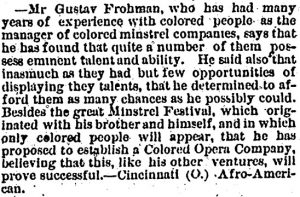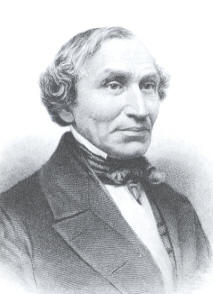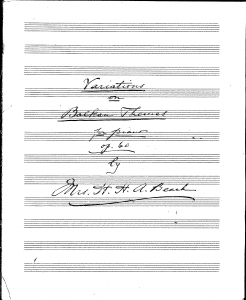In the late 19th century, the U.S. government established Native American Boarding Schools, also known as Indian Boarding Schools, as a means of assimilating Indigenous youth into American culture.1
This extract is titled In a Government Indian School, written by Bertha S. Wilkins and published in 1897. The article describes Wilkins’s experiences as a teacher at a Government boarding school on the Pima Indian Reservation in Arizona. Wilkins begins by categorizing various “types” of students, stating, “Better conditions for studying the Indian child can hardly be imagined”.2 As a government employee and teacher, her role in the boarding school allowed her the freedom to write openly in this manner. She touches on topics ranging from social standing to academics, often with vivid descriptions, particularly regarding music. The tone suggests the article was written for those interested in the boarding school and in understanding what the students from the reservations were like as they went through the process of assimilation. For example, she writes, “Little Alice, under exactly the same conditions, has little power of concentration, but sings so sweetly and enjoys life so much that one is tempted to let her go her own smiling little way.”3 This shows a lack of objectivity in her observations, as there is no detailed analysis of the singing beyond the word “sweetly,” which reduces the individuality of the girl described. Browner highlights the importance of recognizing regional differences in singing styles, something Wilkins overlooks here.4
Wilkins describes this particular tribe of students as being highly musical but writes, “Their voices do not have the silvery quality of the white child’s voice, nor the rich resonance of the young Negro’s; yet under training they develop a quality of tone which is distinctive and charming.”5 This echoes similar descriptions found in Tick’s (2008) documentary collections, where Native voices were often characterized as “miserable” or “shrieking,” even when not referring specifically to singing.6
Wilkins’s portrayal carries a tone of undervaluing Native American voices, through comparison and by suggesting they require training, at least in singing.
This text reflects the cultural attitudes of the late 19th century when boarding schools were established on reservations for the purpose of assimilation and the study of Native cultures, seen at the time as “sub-cultures.” The narrative reinforces the idea of Native Americans being in the early stages of cultural evolution, with the classroom serving as a kind of laboratory where children were observed while being taught Western ways of life, including the refinement of their singing voices to produce a more desirable tone. Wilkins’s account fails to mention important aspects such as classroom management, discipline, or the children’s personal experiences, and it does not address how this education impacted their family dynamics. Instead, her tone remains light, offering little insight into the children’s emotional or psychological experiences within this system.
1 Mejia, Melissa. “The U.S. History of Native American Boarding Schools.” The Indigenous Foundation, July 26, 2022. https://www.theindigenousfoundation.org/articles/us-residential-schools.
2 Bertha Wilkins, “In a Government Indian School,” Land of Sunshine, June-November 1897, 242-247, Indigenous Histories and Cultures in North America.
3 Wilkins, “In a Government Indian School,” 243.
4 Tara Browner, “An Acoustic Geography of Intertribal Pow-wow Songs,” in Music of the First Nations: Tradition and Innovation in Native North America (Urbana-Champaign: University of Illinois Press, 2009), 136-139.
5 Wilkins, “In a Government Indian School,” 245.
6 Tick, Judith, and Beaudoin, Paul, eds. Music in the USA : A Documentary Companion. Oxford: Oxford University Press, Incorporated, 2008. Accessed September 20, 2024. ProQuest Ebook Central.






